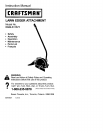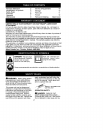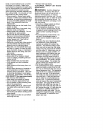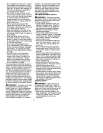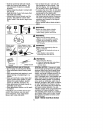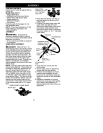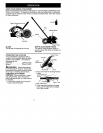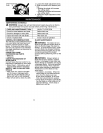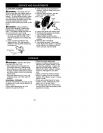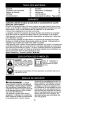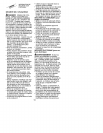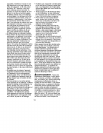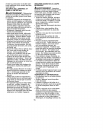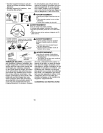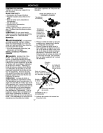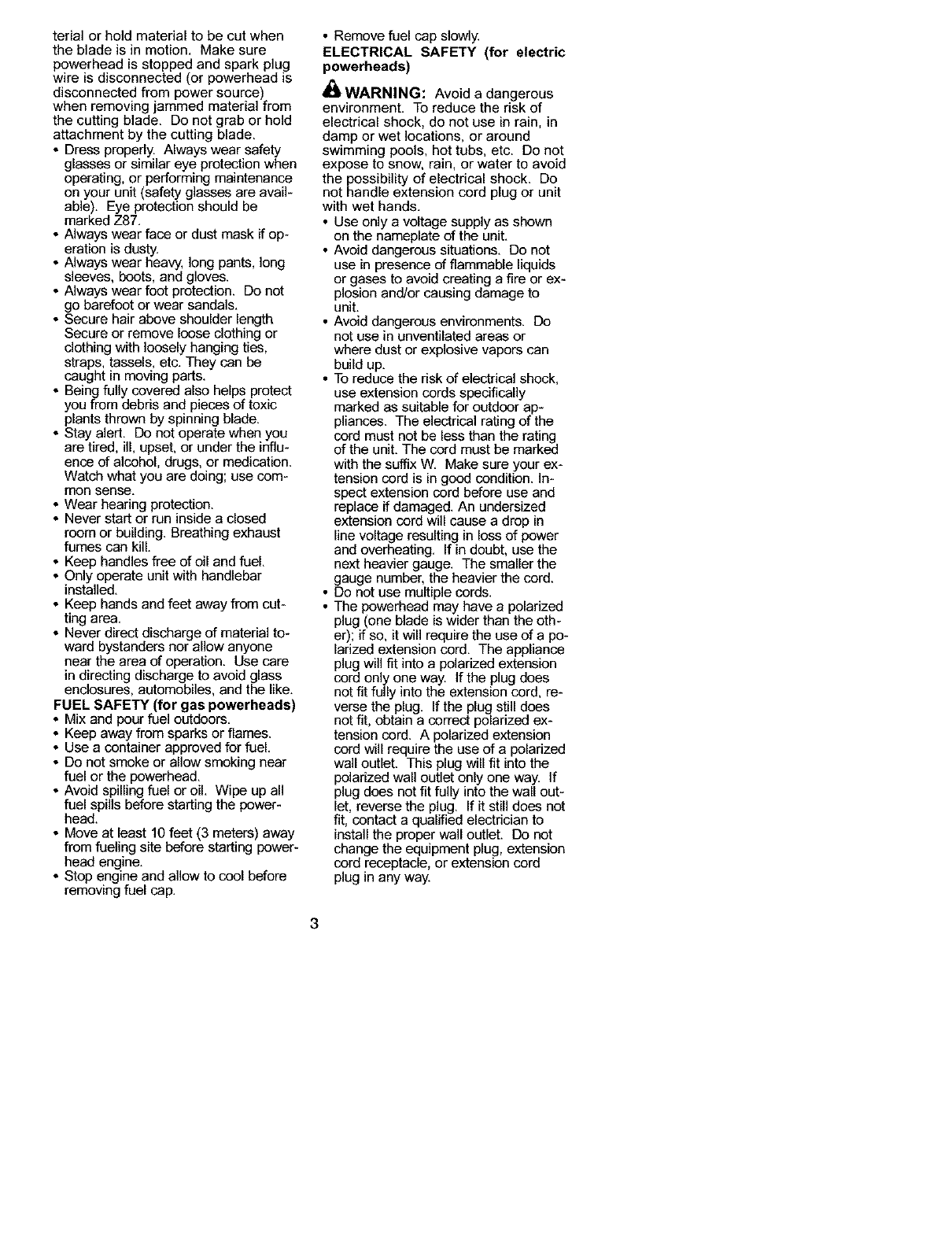
terial or hold material to be cut when
the blade is in motion. Make sure
powerhead is stopped and spark plug
wire is disconnected (or powerhead is
disconnected from power source)
when removing jammed material from
the cutting blade. Do not grab or hold
attachment by the cutting blade.
° Dress properly. Always wear safety
glasses or similar eye protection when
operating, or performing maintenance
on your unit (safety glasses are avail-
able). Eye protection should be
marked Z87.
° Always wear face or dust mask if op-
eration is dusty.
° Always wear heavy, long pants, long
sleeves, boots, and gloves.
° Always wear foot protection. Do not
go barefoot or wear sandals.
° Secure hair above shoulder length
Secure or remove loose clothing or
clothing with loosely hanging ties,
straps, tassels, etc. They can be
caught in moving parts.
° Being fully covered also helps protect
you from debris and pieces of toxic
plants thrown by spinning blade.
° Stay alert. Do not operate when you
are tired, ill, upset, or under the influ-
ence of alcohol, drugs, or medication.
Watch what you are doing; use corn-
mOBsense.
° Wear hearing protection.
° Never start or run inside a closed
room or building. Breathing exhaust
fumes can kill.
° Keep handles free of oil and fuel.
° Only operate unit with handlebar
installed.
° Keep hands and feet away from cut-
ting area.
° Never direct discharge of material to-
ward bystanders nor allow anyone
near the area of operation. Use care
in directing discharge to avoid glass
enclosures, automobiles, and the like.
FUEL SAFETY (for gas powerheade)
° Mix and pour fuel outdoors.
° Keep away from sparks or flames.
° Use a container approved for fuel.
° Do not smOke or allow smoking near
fuel or the powerhead.
° Avoid spilling fuel or oil. Wipe up all
fuel spills before starting the power-
head.
° Move at least 10 feet (3 meters) away
from fueling site before starting power-
head engine.
° Stop engine and allow to cool before
removing fuel cap.
• RemOve fuel cap slowly.
ELECTRICAL SAFETY (for electric
powerheads)
_WARNING: Avoid a dangerous
environment. To reduce the risk of
electrical shock, do not use in rain, in
damp or wet locations, or around
swimming pools, hot tubs, etc. Do not
expose to snow, rain, or water to avoid
the possibility of electrical shock. Do
not handle extension cord plug or unit
with wet hands.
• Use only a voltage supply as shown
on the nameplate of the unit.
• Avoid dangerous situations. Do not
use in presence of flammable liquids
or gases to avoid creating a fire or ex-
plosion and/or causing damage to
unit.
• Avoid dangerous environments. Do
not use in unventilated areas or
where dust or explosive vapors can
build up.
• To reduce the risk of electrical shock,
use extension cords specifically
marked as suitable for outdoor ap-
pliances. The electrical rating of the
cord must not be less than the rating
of the unit. The cord must be marked
with the suffix W. Make sure your ex-
tension cord is in good condition. In-
spect extension cord before use and
replace if damaged. An undersized
extension cord will cause a drop in
line voltage resulting in loss of power
and overheating. If in doubt, use the
next heavier gauge. The smaller the
gauge number, the heavier the cord.
• Do not use multiple cords.
• The powerhead may have a polarized
plug (one blade is wider than the oth-
er); if so, it will require the use of a po-
larized extension cord. The appliance
plug will fit into a polarized extension
cord only ooe way. Ifthe plug does
not fit fully into the extension cord, re-
verse the plug. If the plug still does
not fit, obtain a correct polarized ex-
tension cord. A polarized extension
cord will require the use of a polarized
wall outlet. This plug will fit into the
polarized wall outlet only one way. If
plug does not fit fully into the wall out-
let, reverse the plug. If it still does not
fit, contact a qualified electrician to
install the proper wall outlet. Do not
change the equipment plug, extension
cord receptacle, or extension cord
plug in any way.
3



